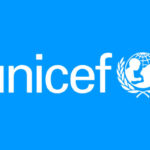The initiative, beginning with a multi-stakeholder workshop, government said, seeks to inject fresh urgency into implementation of the UNEP report and deliver a comprehensive remediation programme for Ogoniland.
Petroleum Minister, Mrs Diezani Alison-Madueke who is coordinating the multi-stakeholder efforts as recommended by UNEP, brought together traditional rulers, community leaders, faith based leaders, industry operators academics, NGOs , CSOs, UNEP representatives and relevant government ministries critical to the environmental restoration of Ogoniland.
However, this is not the first of such gathering with little or no result achieved at the end.
Since the report was commissioned, UNEP representatives and stakeholders have been meeting with top government officials and other key partners regarding the implementation of the environmental remediation proposed by UNEP in the Environmental Assessment of Ogoniland.
Last week’s consultations sought to consolidate on the gains of the August 8, 2014 meeting where the Movement for the Survival of Ogoni People (MOSOP) had facilitated the consultative meeting in which all strata of Ogoni people participated.
The UNEP report at a glance
The Nigerian government commissioned UNEP in 2006 to carry out an independent scientific assessment of the environment and public health impacts of oil contamination of Ogoniland in Rivers State. On August 4 2011, UNEP submitted the report to government.
The report found that pollution from over 50 years of oil operations in the region has penetrated further and deeper than many may have supposed.
It therefore recommended that through a combination of approaches, individual contaminated land areas in Ogoniland can be cleaned up within five years, while the restoration of heavily-impacted mangrove stands and swamplands will take up to 30 years.
However, according to the report, all sources of ongoing contamination must be brought to an end before the clean-up of the creeks, sediments and mangroves can begin.
The report also recommended establishing three new institutions in Nigeria to support a comprehensive environmental restoration exercise.
A proposed Ogoniland Environmental Restoration Authority would oversee implementation of the study’s recommendations and should be set up during a Transition Phase which UNEP suggests should begin as soon as possible, among other key recommendations.
Running round in circles?
A Presidential Implementation Committee (PIC) was then set up by the Federal Government chaired by the Petroleum Minister to review the UNEP report. After thorough considerations of the recommendation of the report by the PIC, President Goodluck Jonathan based on the PIC report and in line with the commissions of the Petroleum Act, approved the establishment of the Hydrocarbon Pollution Restoration Project (HYPREP) in 2012.
HYPREP was to be a special unit under the Ministry of Petroleum Resources. Its duties, among others, were to implement the actionable recommendations of the UNEP report on Ogoni land.
Information sourced from HYPREP website on some of the emergency measures it has embarked towards Ogoni cleanup showed that it had merely been collaborating with foreign and local universities to conduct “an epidemiological study and the setting up of medical registers.”
“HYPREP is holding public awareness campaigns to warn individuals who are undertaking “put fire” (crude oil theft) activities, that such activities are detrimental to their health and their environment,” the agency said.
However, the petroleum minister conceded that while HYPREP has implemented some of the transition phase objectives and emergency measures as recommended in the UNEP report, there are still actionable recommendation spread across government, public health, environmental, operational and community issues that are yet to be addressed.
“The Federal Government recognizes and is very mindful that we are yet to achieve the full objectives as envisioned by this administration,” the minister said.
In the midst of the unfulfilled objectives is the neglect of the Ogoni people in the scheme of things.
She again conceded that “Upon consultations with the people of Ogoniland, it has become clear that the community and relevant stakeholders have not been properly consulted or incorporated into the implementation processes of the UNEP report.”
“We want and need to know at this time from the residents in the community and the representatives what is the real solution on ground; which of UNEPs recommendations have been implemented, what still needs to be done and what is holding the actionable items from being done,” the oil minister said at the consultative forum.
Who’ll disburse Ogoni cleanup fund?
The UNEP assessment report, had also recommended amongst others, the contribution of $1bn by the government and oil industries as cost of the cleanup and which would be managed by an independent authority with a fixed initial lifespan of 10 years.
But there seem to be confusion as per which body will coordinate the disbursement of the cleanup fund. If such body is not HYPREP, that means another body or unit would have to be set up, a situation, analysts say may further delay the cleanup process.
In fact, one of the major reasons government said it was convening the multi-stakeholder discussion was to decide on the appropriate structure or entity that should be put in place for the deployment and disbursement of the funds for Ogoni restoration.
Mrs Alison-Madueke said: “Let me make it clear at this point that the Hydrocarbon Pollution Restoration Project is not the body that will handle funds or deployment of those said funds regarding the Ogoni restoration efforts in tandem with UNEP.”
Explaining further, the minister said that part of the structural adjustments in the fresh implementation efforts would include the setting up of an independent body as recommended in the report to deploy and disburse funds meant for the restoration exercise.
“Accordingly, government has been deliberately cautious by solely and carefully reviewing the HYPREP structure to determine the best way to rejuvenate the programme to fully restore Ogoni land as is envisioned in the report,” she added.
 Join Daily Trust WhatsApp Community For Quick Access To News and Happenings Around You.
Join Daily Trust WhatsApp Community For Quick Access To News and Happenings Around You.


